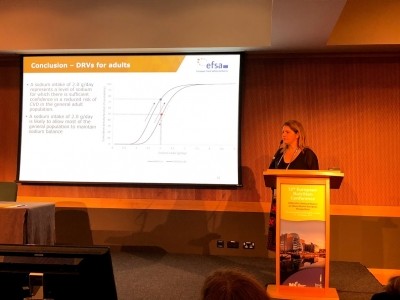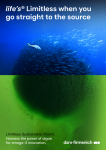Assessing EU kids' nutrient intakes ‘constrained by lack of data’

A collaboration involving the University of Leeds in the UK with the World Health Organisation (WHO) found the majority of the reporting gaps were in Central and Eastern European countries.
The team estimate that only a third, mainly Western, WHO European member states provided published data on child nutrient intakes out of the fifty-three WHO Europe countries sampled.
“The lack of available data for child nutrient intake is concerning,” said Holly Rippin, lead study author and a postgraduate researcher from the University’s school of food science and nutrition.
“It makes it extremely difficult to identify vulnerable groups, compare nutrient intakes between countries and provide evidence for policies that could improve health. It’s similar to trying to describe a complex watercolour when large sections haven’t been painted in yet.”
WHO European Food & Nutrition Action Plan
Assessing dietary patterns and intakes in a population via a national diet survey (NDS) play a crucial role in informing relevant policy decisions.
When implemented correctly, their value and range of insights have led the WHO European Food & Nutrition Action Plan to encourage member states to ‘strengthen and expand nationally representative diet and nutrition surveys’ in an effort to gain a wider and detailed picture.
However, a recent review found that thirty-four out of fifty-three WHO European countries, which have nationally representative NDS, found the majority of gaps lie in Central and Eastern European countries (CEEC).
In an effort to provide a comprehensive, up-to-date review, the collaboration began by looking at the limited available data from the national diet surveys against nutrient intakes recommended by WHO.
While inconsistent reporting across and within countries hindered comparisons, the study identified some key areas of concern.
In particular the team found that the average intakes for children reported in the majority of countries, including the UK, did not meet most of the WHO recommended nutrient intakes.
Further gaps in the research identified around 30% of countries reported nutrient intake data by gender and age group for children and adolescents.
Age groupings varied across countries and several countries did not report nutrients in all age groups or reported on different types of nutrients.
In addition, many countries did not separate intake amounts for girls and boys in the youngest age groups.
‘Iron a particular issue’
“Our findings indicate that a Europe-wide policy focus could improve intakes of iron, vitamin D, and total folate (one of the B vitamin family) while also reducing sodium and free sugar intake,” said co-author Janet Cade, professor of nutritional epidemiology and public health at Leeds.
“A focus on iron and vitamin D intake would be especially beneficial for girls and children over the age of 10.
“Iron is a particular issue for adolescent girls. The survey data showed low iron intakes in the vast majority of countries. Adolescent girls continue to be at greater risk of iron-deficiency anaemia, which is associated with reduced intellectual and immune function.
“Although a variety of evidence is required to inform national interventions, accurately identifying key dietary trends could help prevent childhood nutrient deficiencies that can cause health issues that extend well into adulthood.”
Invest and improve efforts
Dr Jayne Hutchinson, study co-author also from the School of Food Science and Nutrition at Leeds, highlighted the shortfalls in reporting omega-3 intake.
“Identifying these trends allows for the potential to develop targeted policy and guidance, for example encouraging public education on sources of omega fats.
“Despite the current lack of data, national nutrition and health surveys remain the best source of information on dietary risk factors,” she said.
“It’s vital that government and health bodies should continue to invest and improve efforts to conduct national dietary surveys in a standardised format with a full range of nutrient intakes.”
Dr Joao Breda, study co-author and programme manager for nutrition at WHO Europe believed dietary surveys should be the foundation for all nutrition policies in a country.
“In many cases, our efforts to support countries in achieving the Sustainable Development Goals are constrained by a lack of data.”
Source: Cambridge Core
Published online: doi.org/10.1017/S0954422418000161
“Child and adolescent nutrient intakes from current national dietary surveys of European populations.”
Authors: Holly Rippin, Jayne Hutchinson, Jo Jewell, Joao Breda















